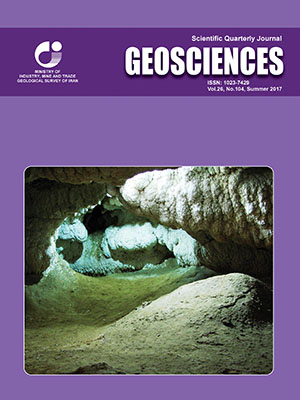Document Type : Original Research Paper
Authors
1 Assistant Professor, Department of Physical Geography, Faculty of Human Sciences, University of Jiroft, Jiroft, Iran
2 Assistant Professor, Research Institute for Earth Sciences, Geological Survey of Iran, Tehran, Iran
3 Professor, Research Institute for Earth Sciences, Geological Survey of Iran, Tehran, Iran
Abstract
Mud volcano is a natural and spectacular phenomenon that usually appear in form of a dome but some are found as a basin. Mud volcanoes comprise a mixture of water, gas and mud. They are found in most parts of the world, particularly in the Alps and Himalayas belts. In Iran, most of the mud volcanoes appear in coastal plains of the Caspian and Oman Seas. Mud volcanoes are known as indicators of oil and gas resources, and they are used to predict the existence of oil and gas reservoirs in Earth subsurface. The Napag mud volcano, as the largest and most active one in Iran, is located on the northern coast of the Oman Sea and is an interesting natural occurrence in the country. It is associated with a 39-m-high cone-shaped hill and several active and inactive vents. Mud eruption with different rates occurs usually every 3-5 minutes, and flows out from the western disrupted side of the edifice downslope toward the surrounding plain. In this research, a sediment sample was taken from the mud-flow during the field work, then analyses was analyzed for major, accessory and trace elements using ICP-OES machine in the laboratory. In addition, an analysis of the grain size of the sediment sample was carried out and the data were processed by the SPSS software. Results show that the sediment particles are of clay and silt in size. Al and Fe elements constitute 89.8 and 4.4 % of the sediment, and their high frequency is related to the high percentage of clay in the sediment. The evolution of the Napag mud volcano was investigated in three different stages: (1) Explosive, (2) Effusive (fast eruption with high rate), (3) Extrusive (slow and gradual eruption of material with high viscosity).
Keywords

